Abstract
1. The rod threshold for seeing a flash on a 2½° square is raised by a nearly simultaneous flash that falls on the surround. When this `contrast-flash' is held fixed in intensity, it raises the log test threshold by a fixed amount no matter how far that threshold has already been raised by light adaptation owing to background or bleaching.
2. This is surprising since fixed backgrounds and bleachings raise the log test threshold much more when the eye is dark than when light adapted.
3. When the test flash is held at some fixed supra-threshold value, the contrast flash exhibits a `critical level', above which the test will no longer be seen. If the surround region upon which the contrast-flash falls is adapted by background or bleaching, its efficacy is reduced so that the `critical level' is raised.
4. Surround adaptation raises the log `critical level' by the same amount that it raises the log threshold for seeing the contrast-flash itself.
5. The way that contrast flashes raise the test threshold is thus entirely different from the way that adaptations by bleachings or backgrounds do. Contrast-flash signals appear to inhibit test-flash signals by interaction at some point central to the site where adaptation occurs.
6. This permits the effect of adaptation on signals to be measured. A given state of adaptation attenuates all flash signals in the same proportion. And in any state of adaptation a single flash will reach threshold when the attenuated signal has a fixed size.
Full text
PDF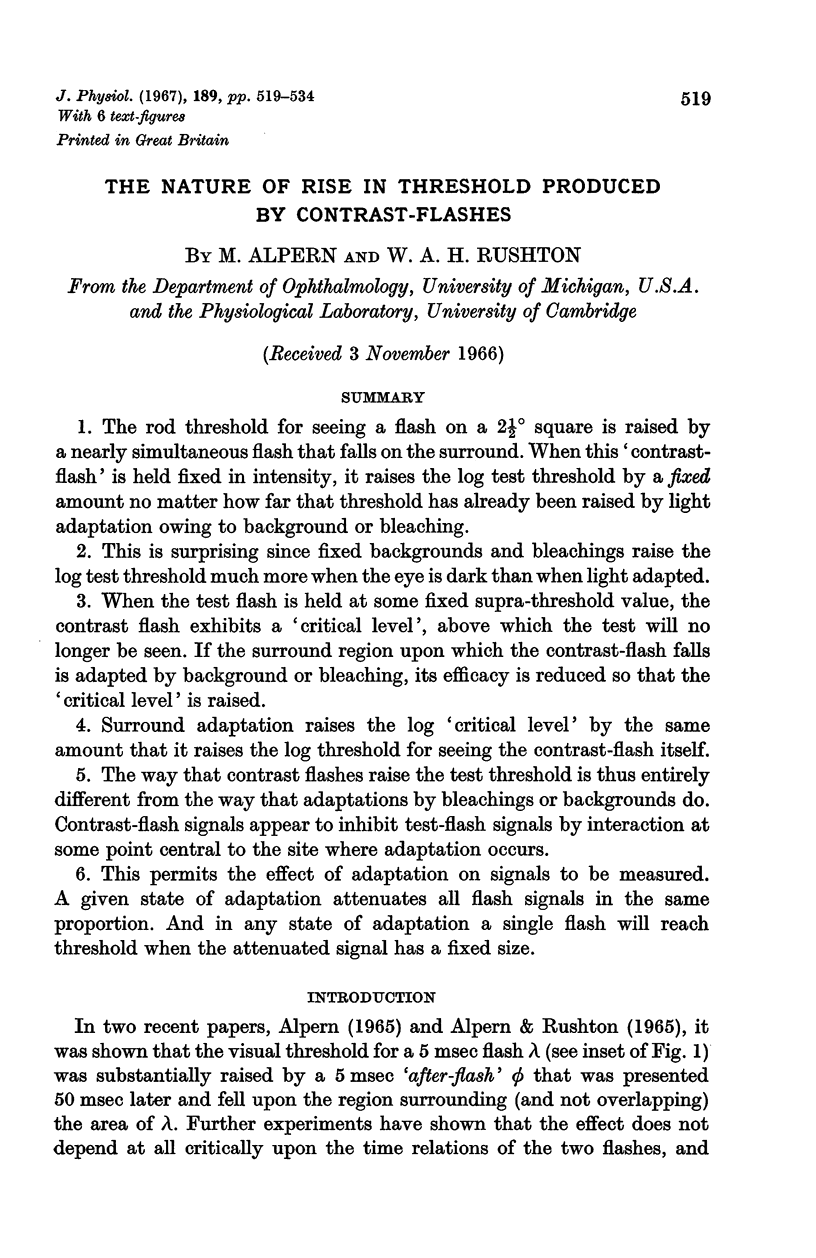
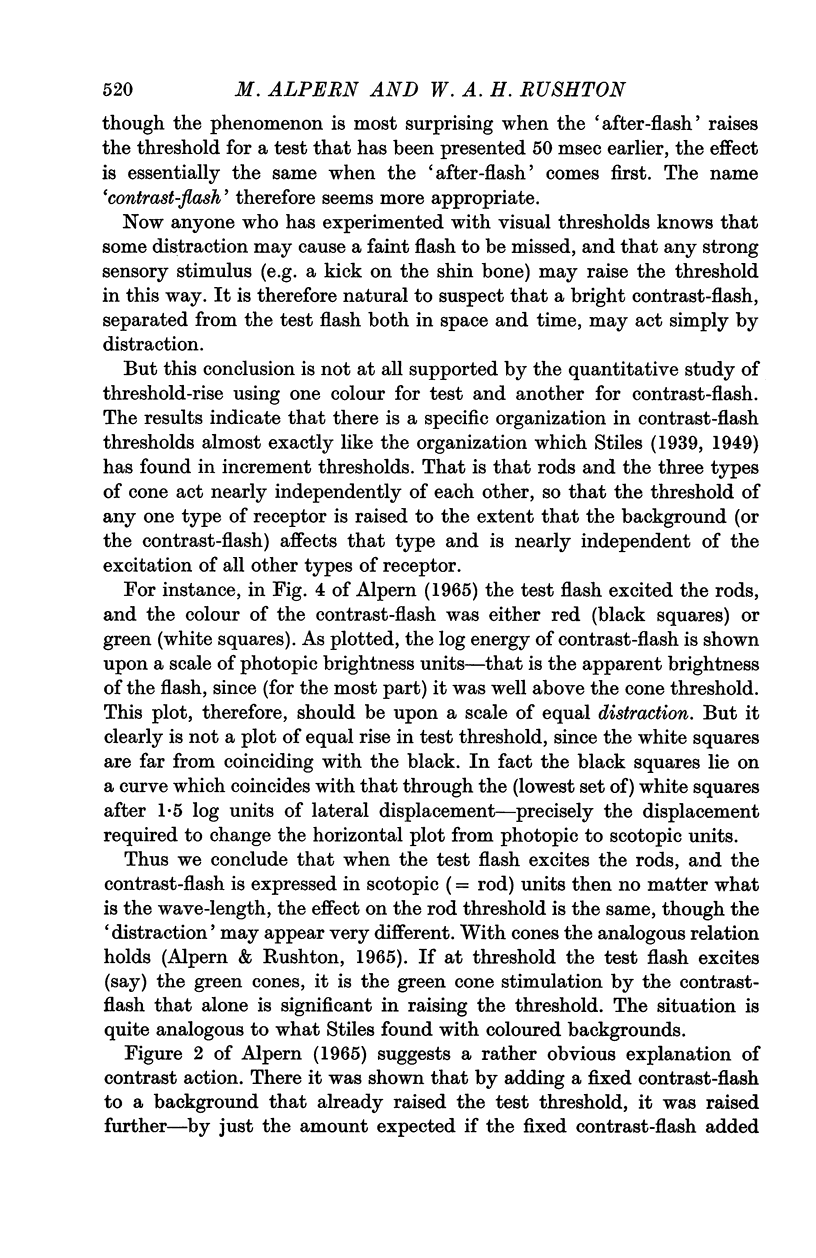
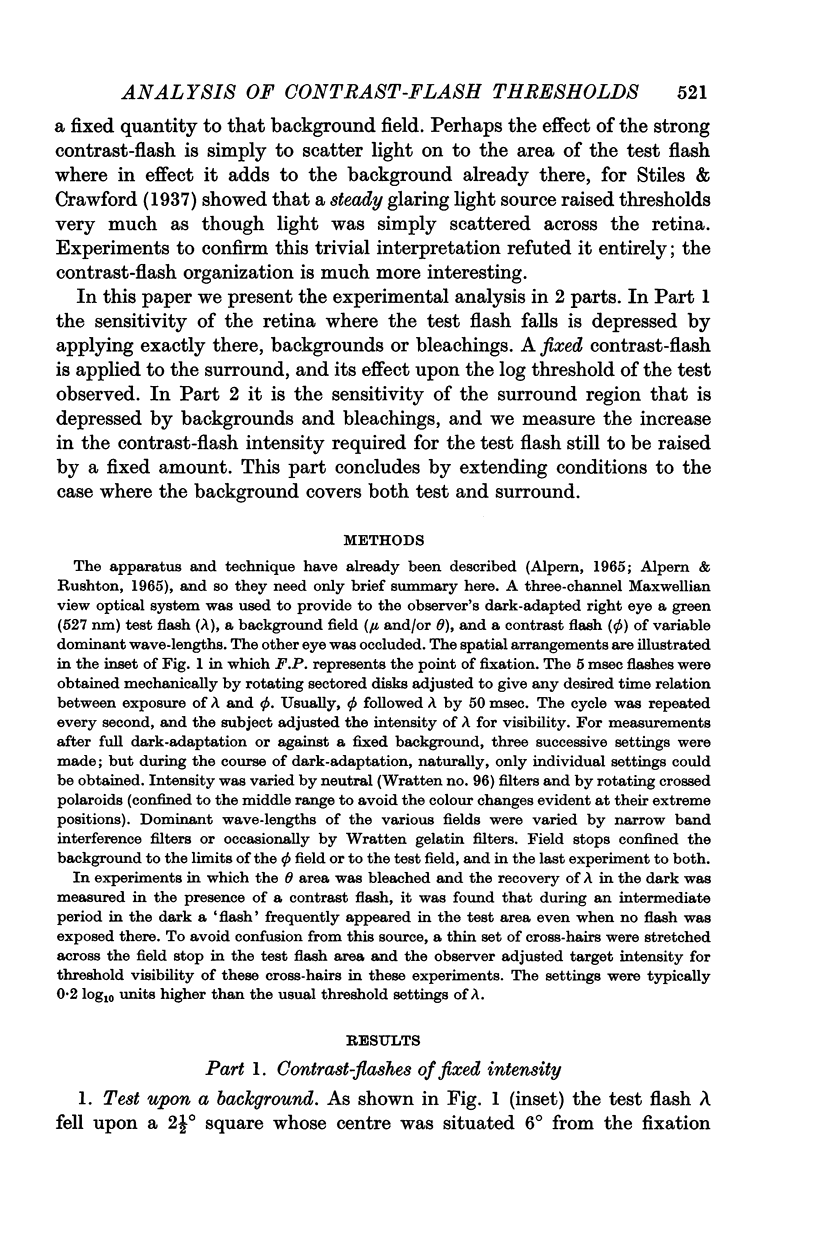
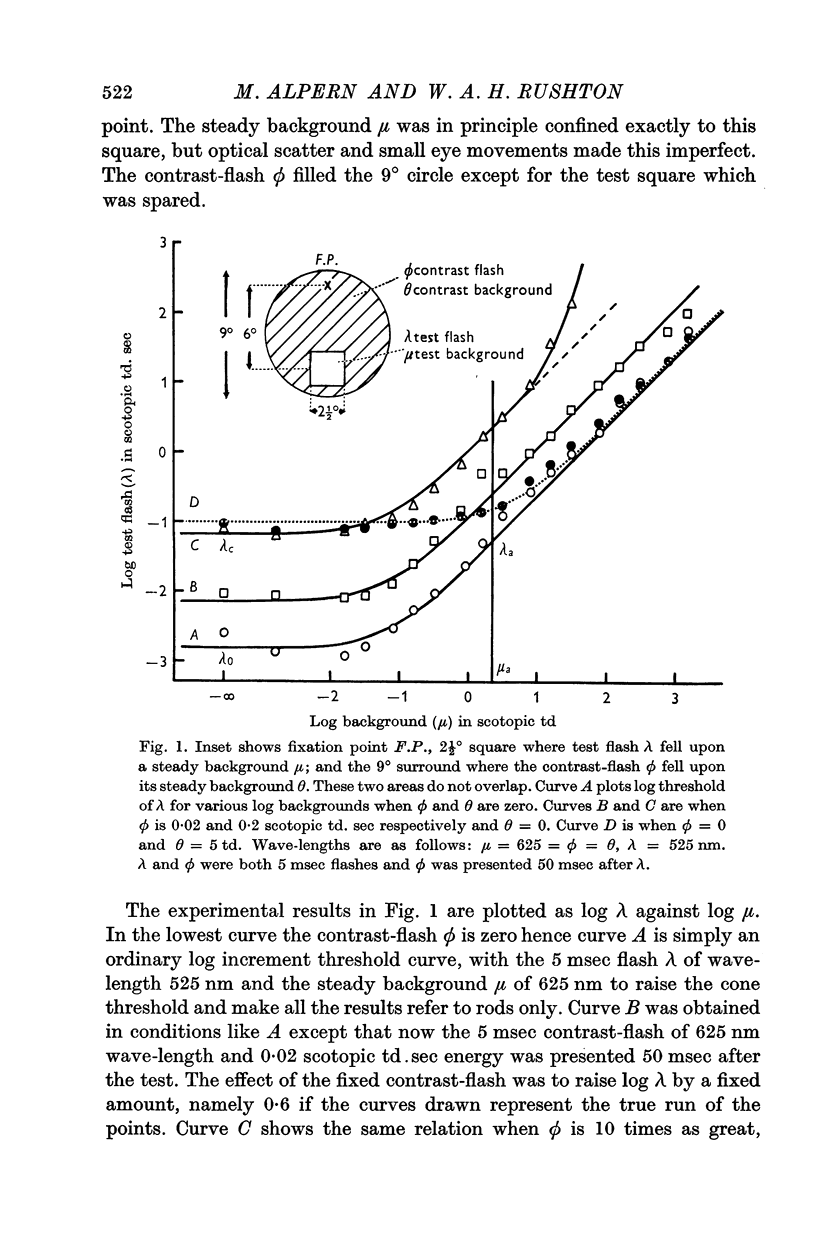
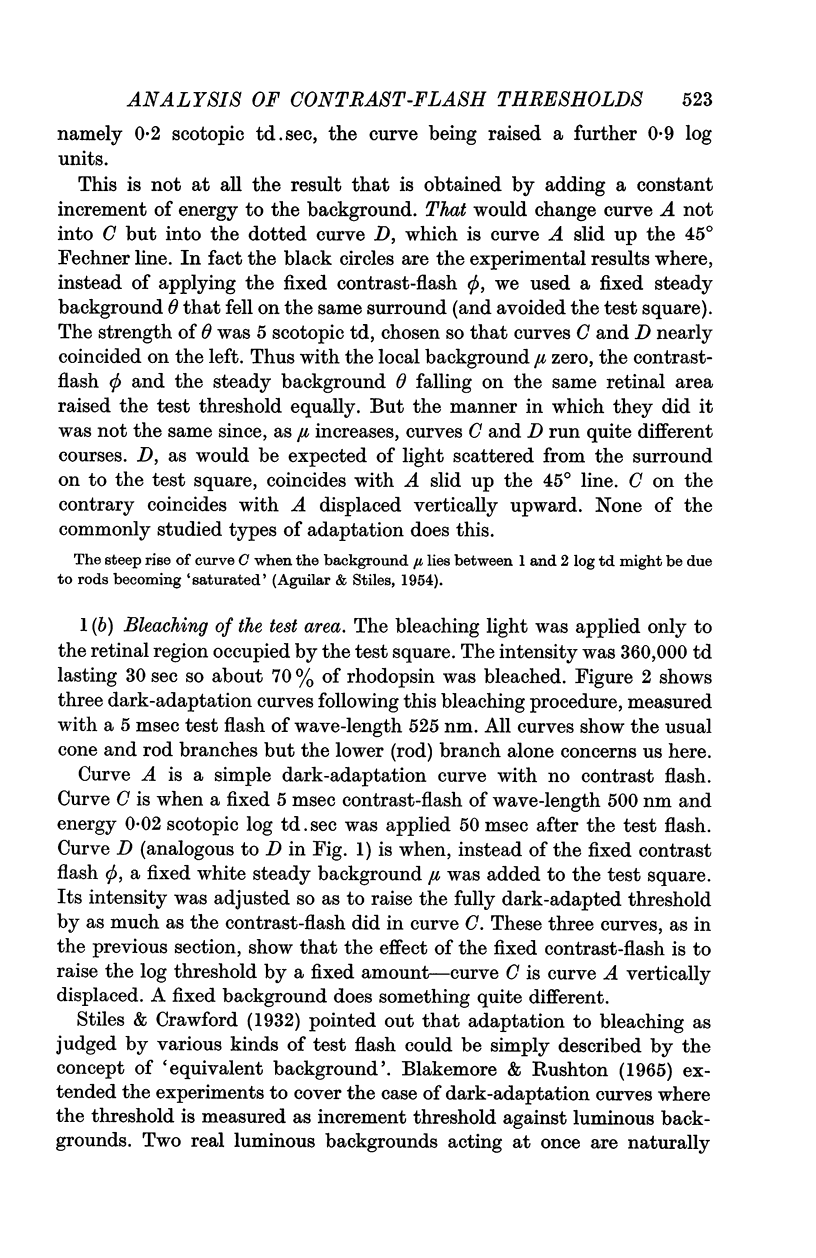
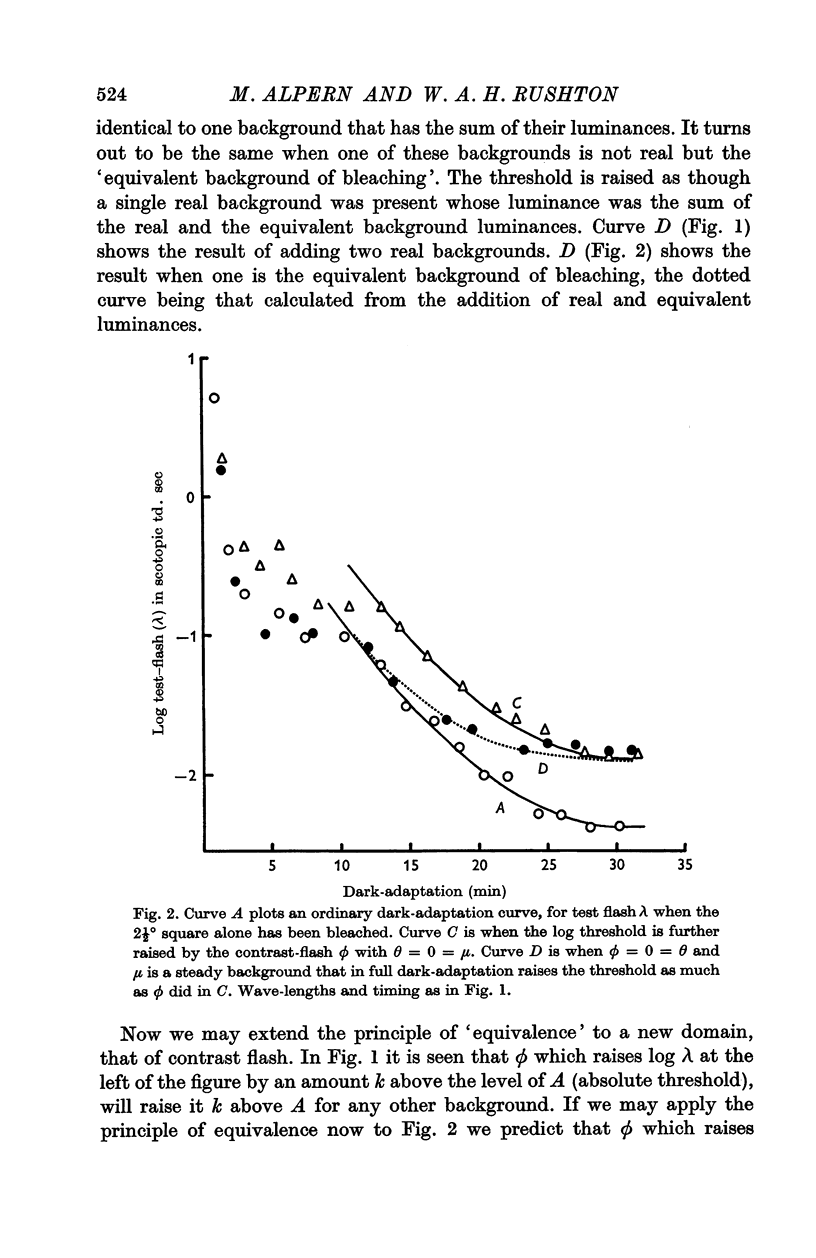
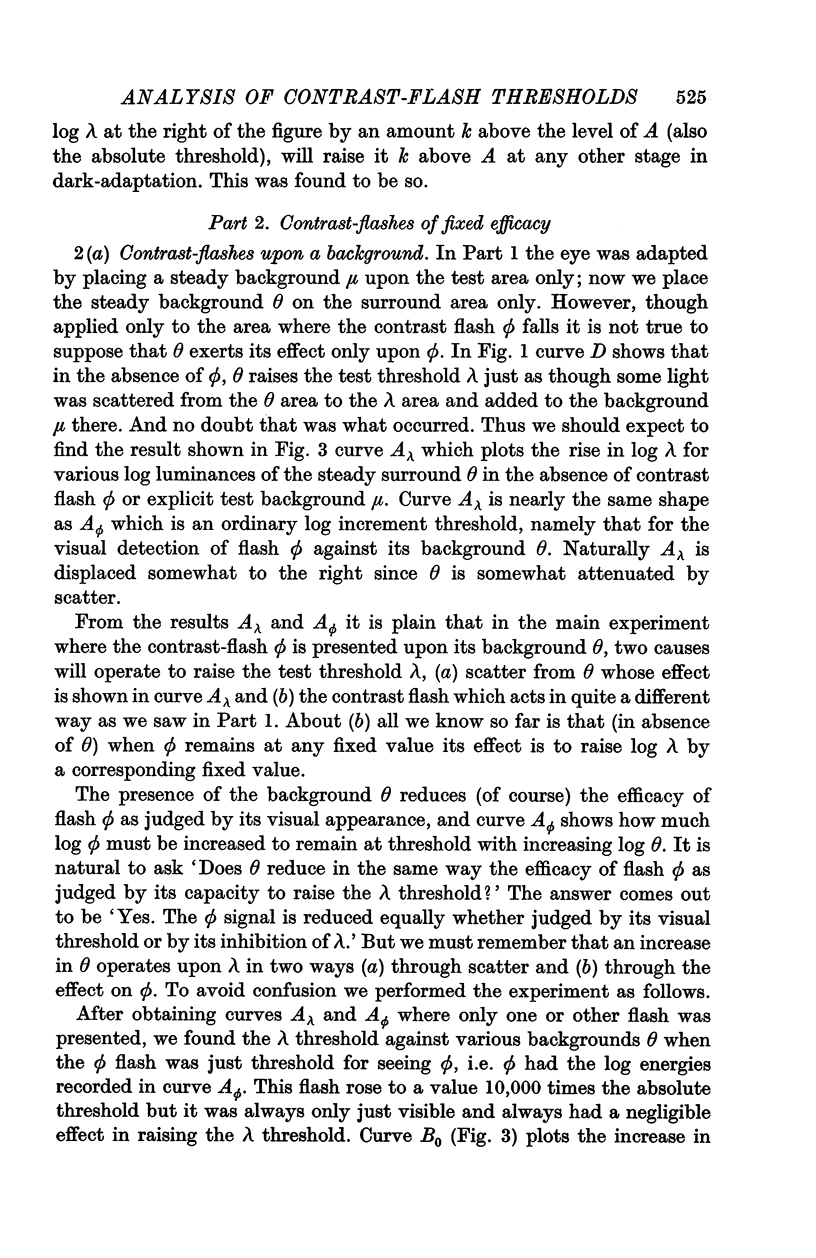
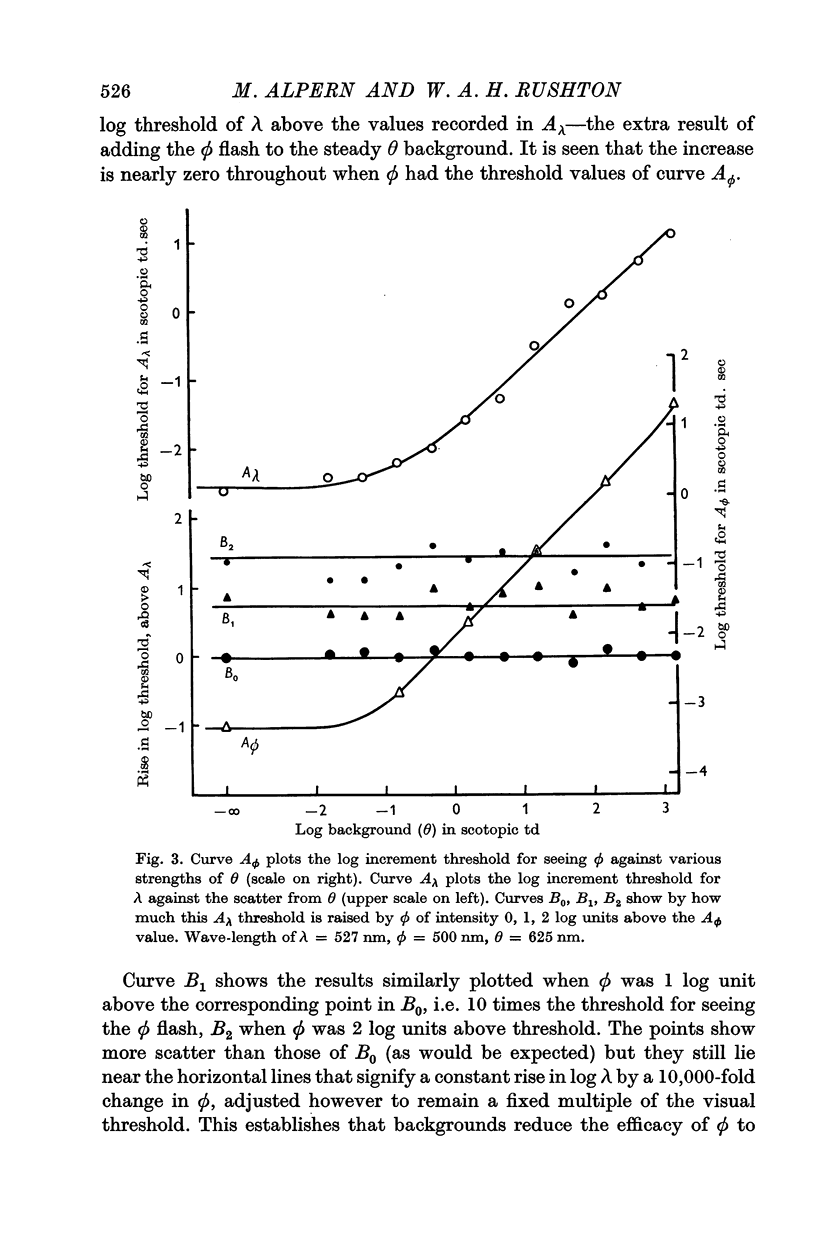
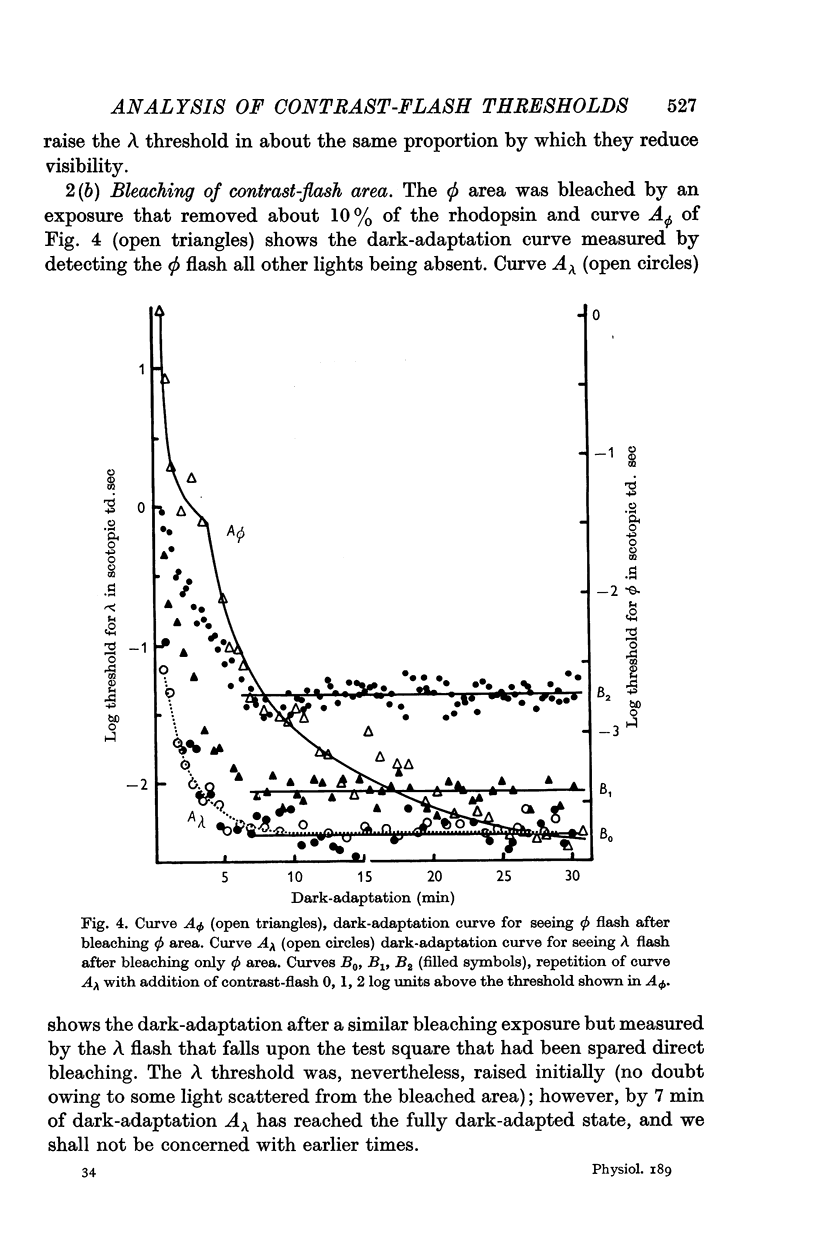
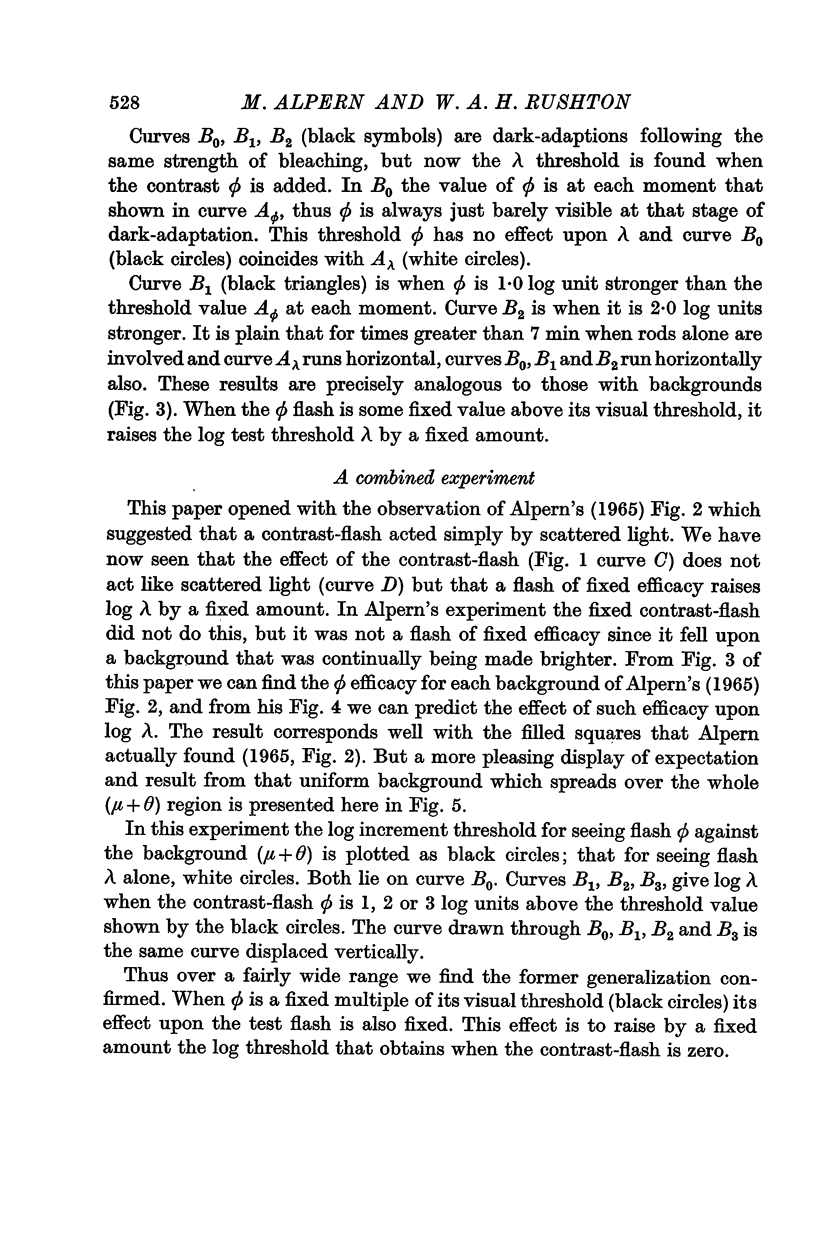
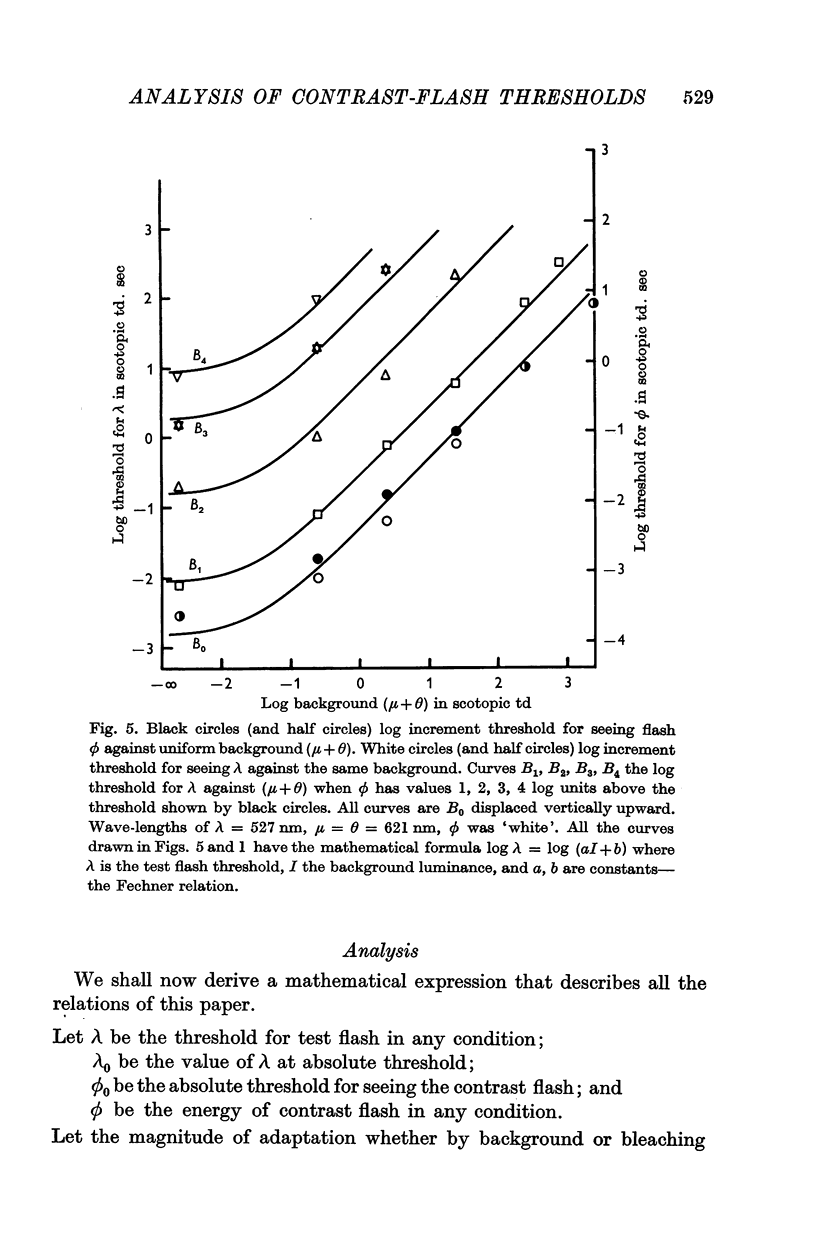
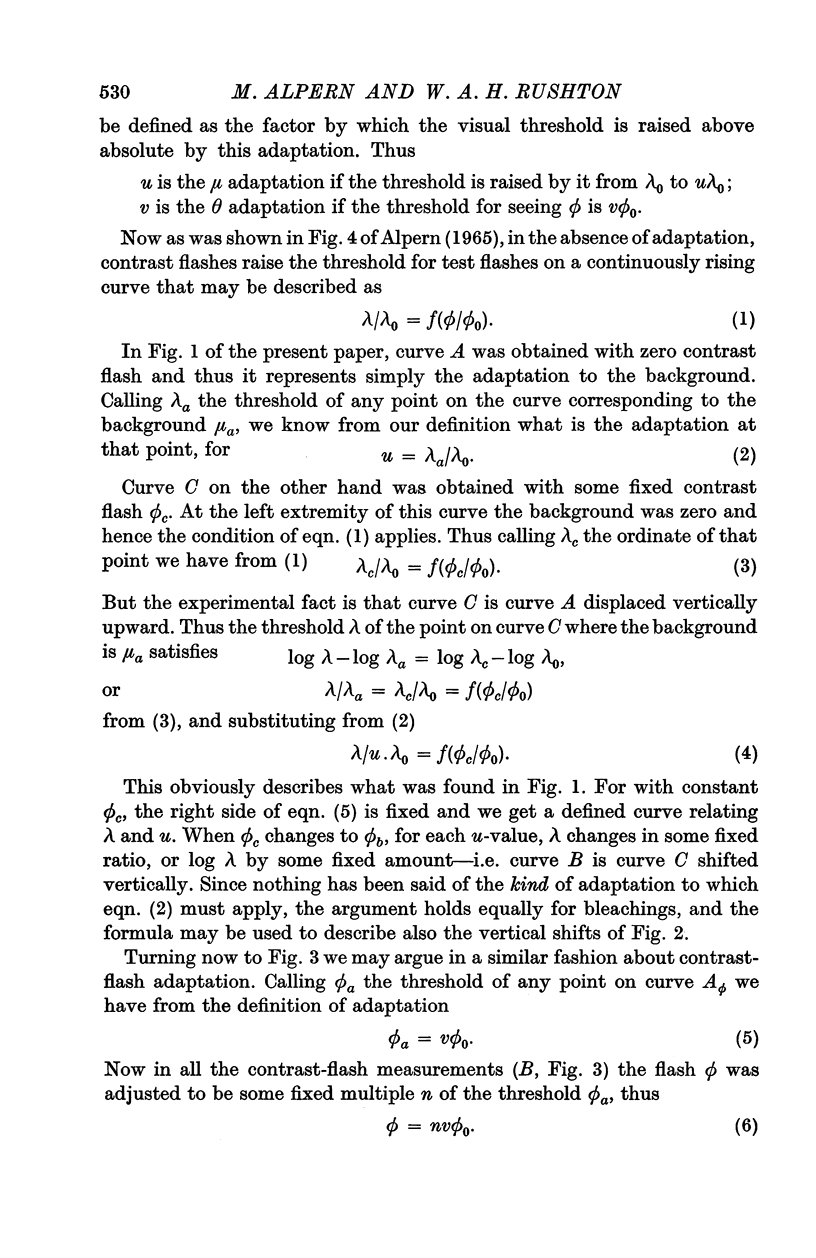
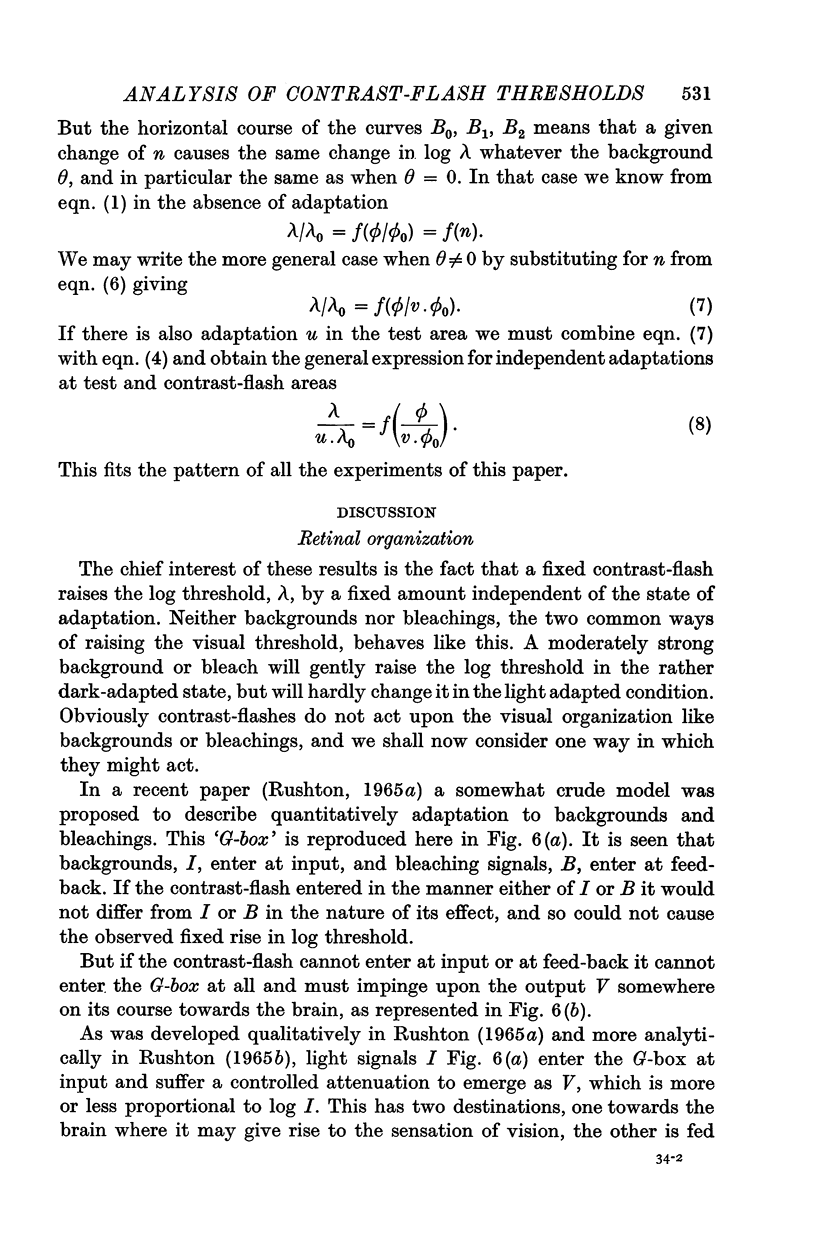
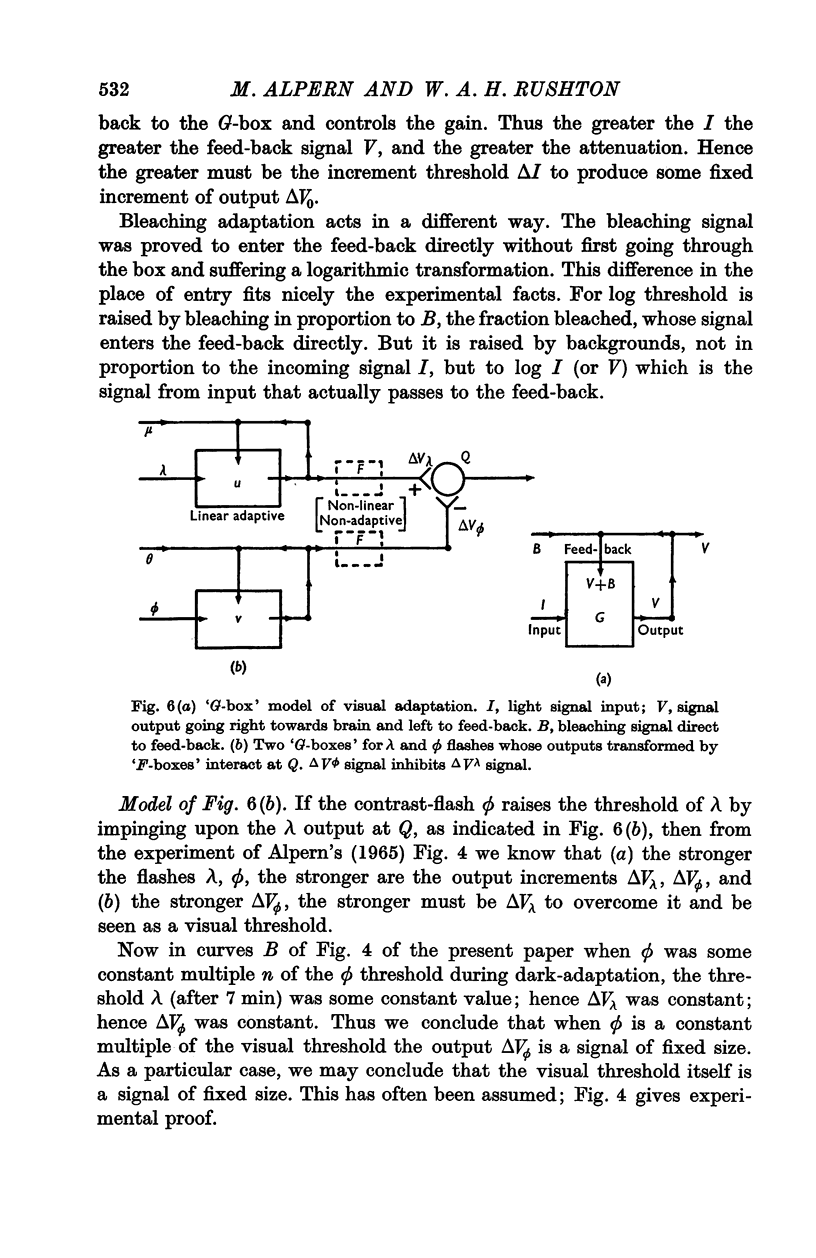
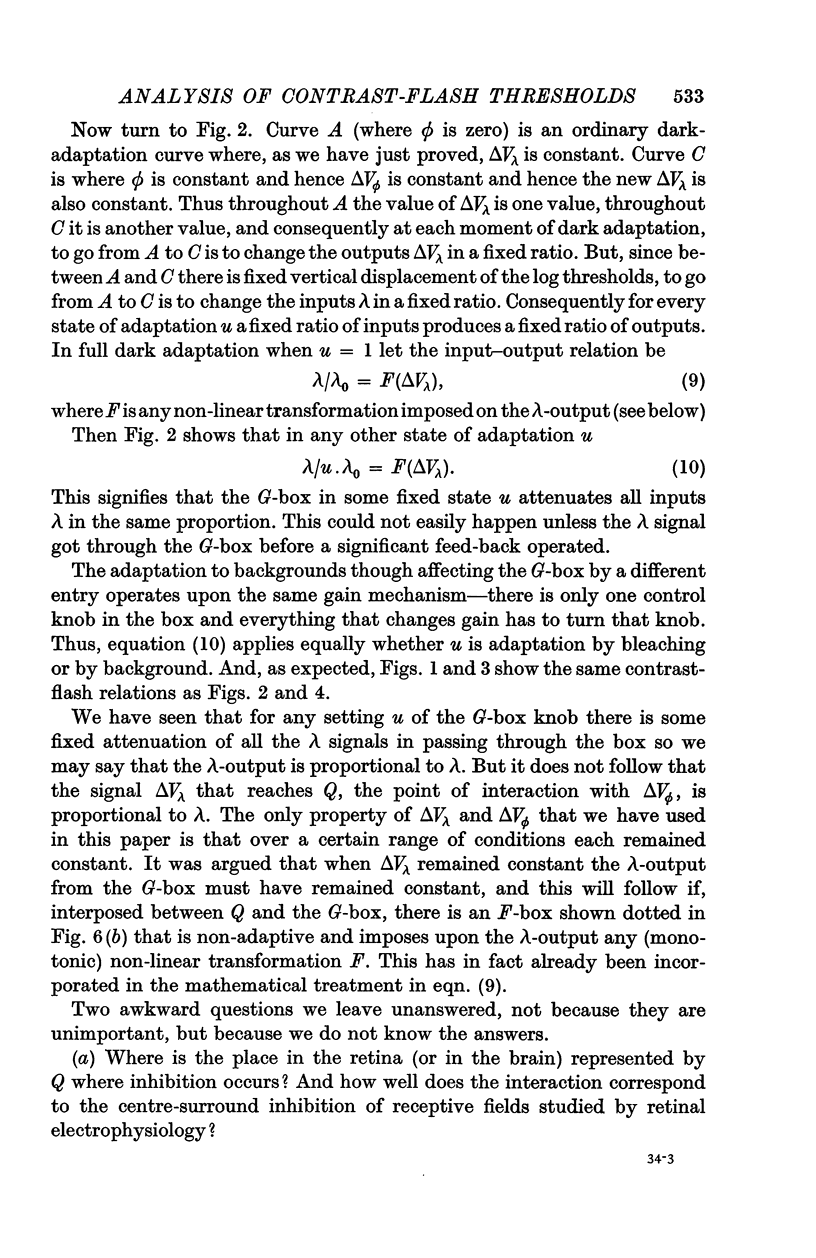
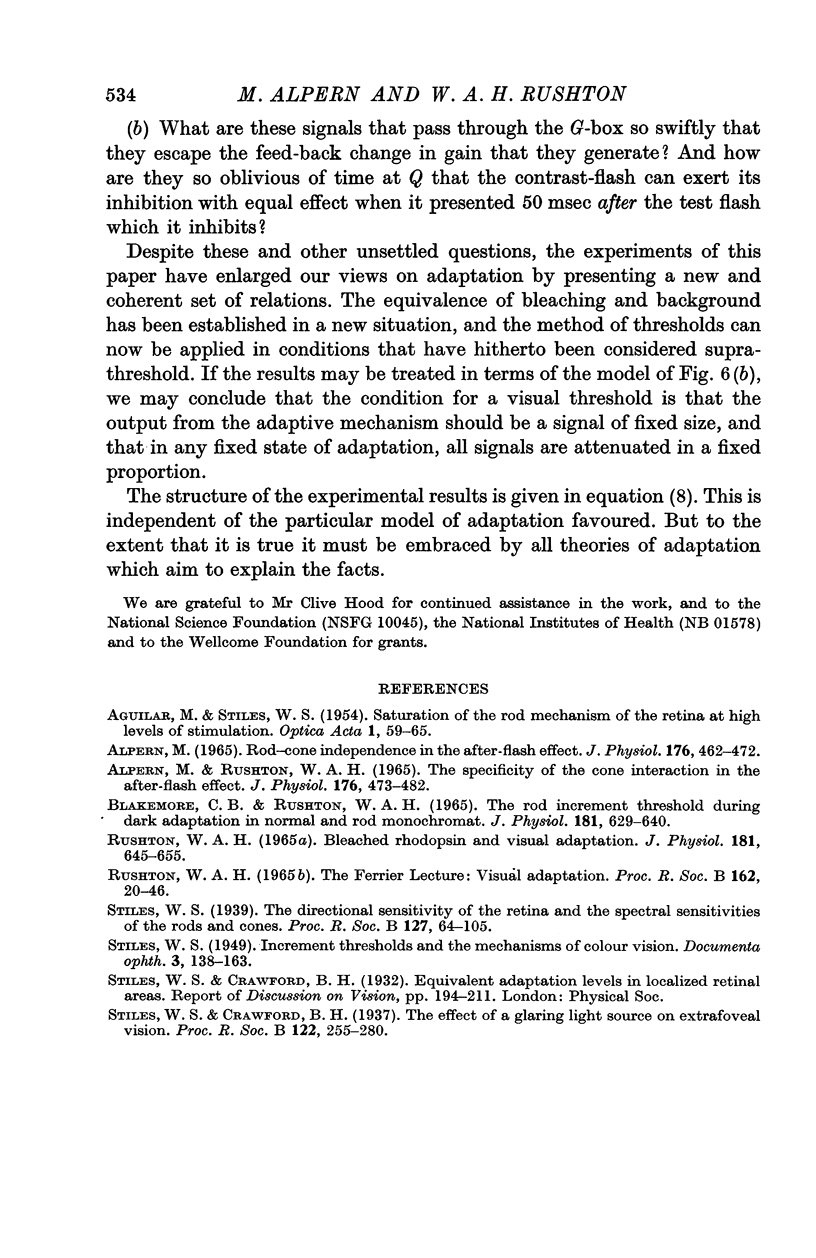
Selected References
These references are in PubMed. This may not be the complete list of references from this article.
- ALPERN M., RUSHTON W. A. THE SPECIFICITY OF THE CONE INTERACTION IN THE AFTER-FLASH EFFECT. J Physiol. 1965 Feb;176:473–482. doi: 10.1113/jphysiol.1965.sp007562. [DOI] [PMC free article] [PubMed] [Google Scholar]
- Blakemore C. B., Rushton W. A. The rod increment threshold during dark adaptation in normal and rod monochromat. J Physiol. 1965 Dec;181(3):629–640. doi: 10.1113/jphysiol.1965.sp007787. [DOI] [PMC free article] [PubMed] [Google Scholar]
- RUSHTON W. A. VISUAL ADAPTATION. Proc R Soc Lond B Biol Sci. 1965 Mar 16;162:20–46. doi: 10.1098/rspb.1965.0024. [DOI] [PubMed] [Google Scholar]
- Rushton W. A. Bleached rhodopson and visual adaptation. J Physiol. 1965 Dec;181(3):645–655. doi: 10.1113/jphysiol.1965.sp007789. [DOI] [PMC free article] [PubMed] [Google Scholar]


